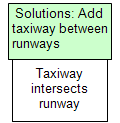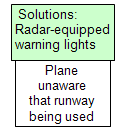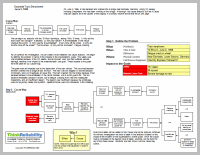With swine flu in the news lately, ‘epidemic’ has been on many minds. However, there is still much that isn’t understood about swine flu. There are other epidemics that we understand much better, such as yellow fever. Yellow fever has been causing epidemics for a long, long time.
But how does it happen? We can do a root cause analysis of a yellow fever epidemic to find out. A thorough root cause analysis built as a Cause Map can capture all of the causes in a simple, intuitive format that fits on one page.
Since we are not looking at a specific event, but rather a general situation we will start with just one impacted goal. A yellow fever epidemic can result in the deaths of thousands of people, which we will consider an impact to the safety goal.
We begin the root cause analysis with this impacted goal and ask “why” questions. Several thousand people may die because there is no cure for yellow fever, it has a high mortality rate, and several thousand people get infected. The people get infected because they’re not vaccinated, and they are bitten by an infected mosquito in the epidemic zone. (The endemic zone is areas of Africa and South America where a low level of yellow fever is always present. The epidemic zone is an area outside the endemic zone to where yellow fever is spread and an epidemic occurs.)
People are not vaccinated because they don’t have access to the vaccine: either it costs too much, or the area is to isolated to receive vaccine. In order for someone to get bit by an infected mosquito in the epidemic zone, the mosquito must be infected, and the person must have been exposed to a mosquito in the epidemic zone. In order for a person to be exposed to a mosquito, the mosquito must have access to a person, and mosquitoes must exist, meaning they are able to breed, meaning breeding pools exist.
A mosquito gets infected by biting a person infected with yellow fever. For yellow fever to spread from the endemic zone to the epidemic zone, this means a person was infected with yellow fever in the endemic zone,
and traveled to the epidemic zone. The person gets infected with yellow fever by being bitten by a mosquito infected with yellow fever (in the endemic zone) without being vaccinated. The person gets bitten by an infected mosquito because they are exposed to mosquitoes (for the same reasons listed above) that are infected, usually by biting monkeys who have been infected by yellow fever.
If you had trouble following all of that, you can see why a process map would be helpful. On the downloadable PDF, both the Cause Map and process map are shown.





